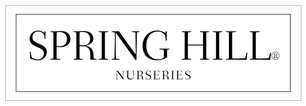Hedges are perfect for adding a beautiful backdrop to your garden, accenting the side or front of a house, giving your yard more privacy, and much more. They require far less maintenance than a traditional wood fence, and can even lower your energy costs by protecting your home from wind and sun
Planting Your Hedge
First, choose a site with good soil and good drainage. Dig the planting trench the length and width of the desired hedge. The trench should be at least one foot wider than the plant root ball and of equal depth. Next, fill the planting trench with water, and allow it to soak into the soil. This pre-watering will help the plant get water to its roots.
Place all plants in the trench at the appropriate spacing. Backfill the trench with the original soil. Gently tamp down soil and water deeply. Spread a 2-to-3\" layer of mulch or other organic material around each plant and cover the entire hedge area. Water frequently, deeply, and consistently—both the area around the trunk and the surrounding soil.
Newly planted arborvitae foliage dries out quickly and will need even more water. Use a sprinkler during dry and windy conditions to help keep it properly hydrated.
Maintaining Evergreen Hedges
To maintain hedges that never lose their luster, you’ll need a sturdy set of pruning shears. Hedges respond best to pruning in late winter or early spring, before buds have formed.
Be mindful of only trimming on the outside of the hedge. When that’s the only pruning a hedge gets, buds are encouraged to form on those trimmed branches, and over time, can form clusters that block sunlight and air. So instead, start pruning by reaching inside the plant and trimming off a few branches. Then use shears to shape the outside as usual, keeping the hedge narrower on the top and wider at the bottom.
After pruning, add a 3-4\" layer of mulch to the root zone. Be sure to keep the mulch from touching the base of the trunk and piling up there—otherwise, this “volcano mulching” can cause problems for the plant.
Evergreen Hedges You’ll Love
For year-round interest that offers privacy, shade or simply the perfect accent.
Emerald Green Arborvitae boasts dense green foliage in a tall, narrow shape that can grow 3-4\' wide but 12-14\' tall. Excellent for structure, style and privacy.
Woodward Globe Arborvitae Hedges form neat spheres of dense green for creating your own garden accents.
Green Mountain Boxwood is ideal for gardeners who want more pyramidal hedges in their garden, often used as a non-intrusive low hedge around other plantings.
See Spring Hill’s full assortment of evergreen hedges.
Flowering Hedge Options
These ornamental shrubs can be planted like hedges to offer privacy or bold backdrops of visual interest.
Red Freedom Hedge Rose is a pest-free, disease-free hardy rose plant that accents the landscape with bright scarlet or coral-to-deep-pink blooms and lush green foliage. Roses, including our Freedom Rose, offer a classic backdrop to any home.
Berry White® Hydrangea features gigantic, color-changing flowers that attract butterflies while adding structure and beauty to the landscape. Hydrangeas can spread 3 to 5 feet up and across, producing many blooms during its long flowering period.
Danica® Hardy Hibiscus grows 6-8\' high with darling flowers that pollinators love. It also won the Royal Horticultural Society of Great Britain’s Award of Garden Merit. Entice butterflies and hummingbirds with a hibiscus hedge, giving your landscape a tropical backdrop.

